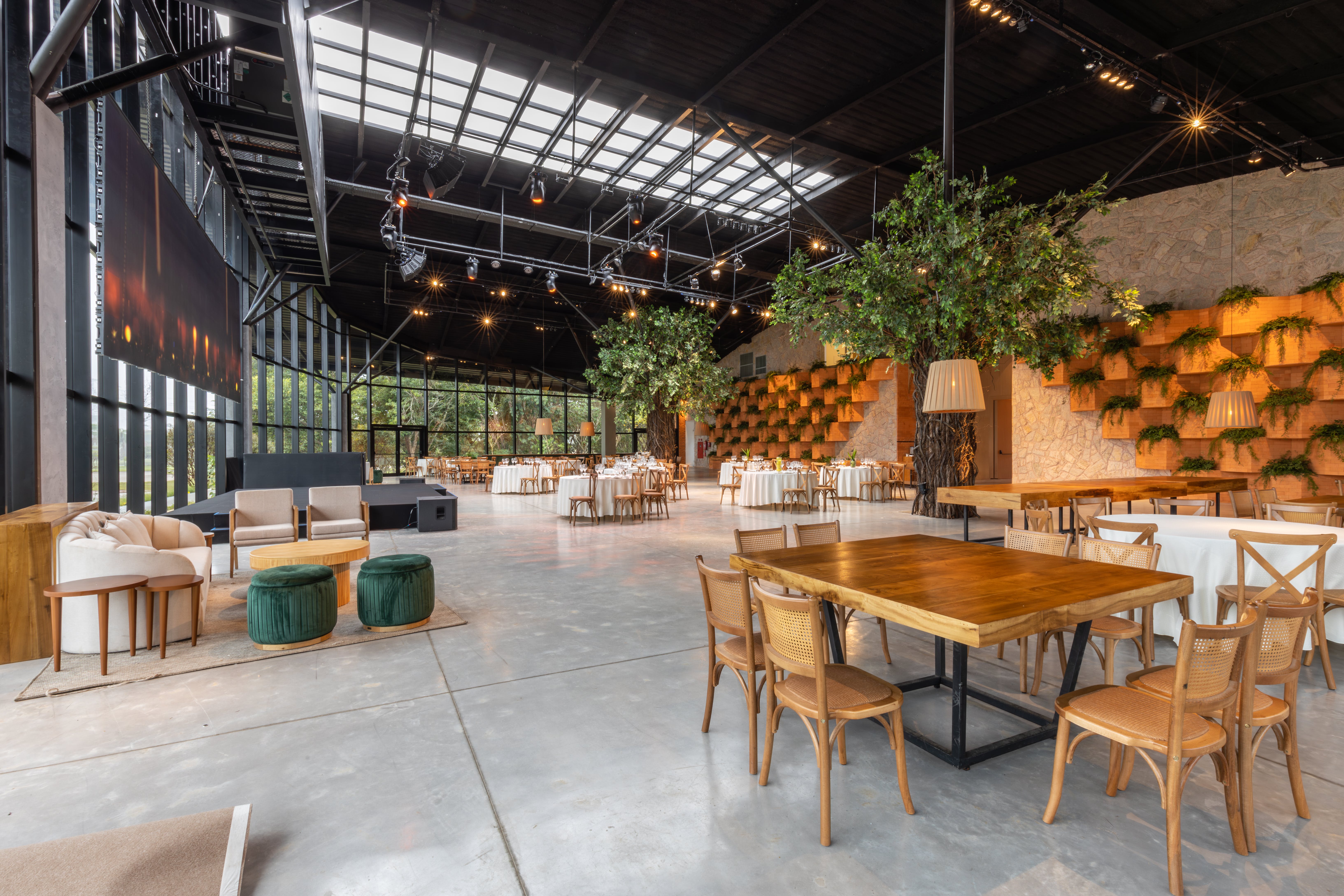5 Energy Management Trends Foodservice Businesses Will Adopt this 2024

Rising costs are pressuring foodservice businesses to make bold adjustments that could threaten their longevity. Between volatile fuel prices and the ever-present need for optimal kitchen temperatures, even just keeping the lights on and the ovens hot is becoming a challenge to manage.
Fortunately, 2024 is ushering in a wave of innovative energy management trends tailored to food service businesses, enabling them to achieve profitability AND sustainability.
But before we examine these trends, let’s remember the significance of a solid energy management strategy in running a food service business.
Why would you need a solid energy management strategy?
Your cold storage and HVAC systems must be running to keep your restaurant comfortable and food safe for your customers.
You can already expect much of your expenses from these areas of your restaurant. This high reliance on such systems presents various challenges for businesses aiming to keep their energy bills manageable.
This is where energy management comes in. A solid energy management plan should solve such challenges and benefit businesses in the long term.

Are you struggling to make a profit while dealing with unusually high energy bills?
Challenges or issues energy management strategies will help solve
- Unpredictable demand and inefficient equipment settings often lead to energy waste during idle periods or suboptimal cooking times.
- Reliance on fossil fuels exposes businesses to volatile energy prices and environmental concerns.
- Lack of insights into energy consumption patterns hinders targeted interventions and prevents continuous improvement.
- Lack of awareness or motivation among employees and customers can hinder energy-saving efforts.
- Traditional equipment and practices often need to be more efficient in waste heat generation and food storage.
Notable benefits to the business
- Improved food quality, reduced overall operational costs by 5% - 7%, and enhanced data for further optimization.
- Enhancing brand image and attracting environmentally conscious customers.
- Predictive maintenance prevents breakdowns and reduces future energy consumption while benchmarking and goal-setting drive sustained progress.
- Improved employee morale and potential cost savings through employee-driven efficiency improvements.
- Reduced food waste can also help reduce operational costs by up to 30%.
4 examples of established brands’ plans for energy management in 2024
Based on recent announcements, industry trends, and the challenges of rising energy costs, big foodservice brands have already taken the initiative to pursue energy management and sustainability:
| Restaurant / Brand | Sustainability Initiative | Benefit |
| 1. McDonald’s | In 2023, McDonald's partnered with IBM to pilot AI-powered kitchen technology in select restaurants. |
|
| 2. Dunkin’ | Dunkin' has launched employee training programs on sustainable practices, including energy conservation tips. |
|
| 3. Starbucks | Starbucks has been implementing its "greener stores" initiative, featuring LED lighting, smart HVAC systems, and energy-efficient coffee machines. |
|
| 4. Yum! Brands (KFC, Pizza Hut, Tavo Bell) | Yum! Brands invested in a multi-year solar energy project in 2023. This push for renewable energy is expected to continue in 2024. |
|

McDonald's saves $4,500 annually using GlacierGrid's energy-efficient solutions.
5 trends businesses will adopt in 2024
With the foodservice industry titans themselves taking the initiative, restaurant owners can rest assured that investing in energy management systems is the next best step to ensuring an improved bottom line, aside from achieving operation sustainability.
Here are the five energy management strategies businesses are aiming to implement in 2024 and the actionables on how you can follow these trends:
1. Embracing smart equipment and automation
The labor crunch and rising energy bills that plagued restaurants in 2023 have forced them to reconsider their approach in 2024. Fortunately, there’s a solution: smart equipment and automation.
As artificial intelligence continues infiltrating various industries, more restaurants will invest in smart equipment. While 32% of restaurants see the potential in leveraging more technology to operate optimally, 79% of diners preferred using online kiosks for convenience.
Customers aren’t the only ones benefiting from the convenience of smart technology. Restaurants have continued to see the practical benefits of automation. It fills staffing gaps, optimizes energy usage, and delivers valuable data to improve operations.
This 2024, we’ll be seeing businesses invest in the following:
- Intelligent cooking appliances
Ovens, fryers, and grills equipped with sensors and AI will optimize cooking processes, minimizing energy consumption during idle periods and adjusting settings based on real-time needs. - Demand-responsive systems
Restaurants can integrate with smart grids to adjust energy usage based on peak demand times, potentially earning financial incentives or avoiding penalties. - Automated lighting and HVAC controls
Sensors and timers will manage lighting and temperature changes more efficiently, reducing unnecessary energy waste.
2. Prioritizing renewable energy sources
Renewable energy prices are dropping (down by 80% since 2010), fossil fuels are spiking, and eco-conscious customers are hungry for change.
So, what's on the menu for 2024? Expect to see more solar and wind farms, new tech like geothermal and hydrogen entering the kitchen, and even local microgrids for restaurants cooking up their own clean power.
It's not just about saving the plane—it's about saving on bills and attracting green-minded diners.
In 2024, renewable energy is the secret ingredient for a sustainable and successful future for the foodservice industry. Expect businesses to start investing in the following:
- Renewable energy partnerships
Restaurants with suitable roof space can install solar panels to generate their own electricity, reducing dependence on fossil fuels and lowering energy bills. - Accessibility to clean energy sources
Collaborations with local renewable energy providers and microgrid initiatives will bring greater access to clean energy sources. Opting for renewable energy suppliers and green electricity certificates will contribute to sustainability goals and potentially attract eco-conscious customers.
3. Data-driven decision-making and optimization
Data is the new hot sauce—spicing up profits and customer satisfaction alike. The ability to pinpoint food waste culprits and eliminate them with laser accuracy will ensure consistent freshness and mitigate inventory loss events.
Expect businesses to invest in energy monitoring and analytics platforms. Real-time data on energy consumption will allow for targeted interventions and adjustments to optimize efficiency across operations—such as GlacierGrid monitoring solution. Monitoring equipment performance allows for preventive maintenance, which can help businesses avoid energy-intensive breakdowns.
4. Engaging employees and customers in sustainability
Restaurants that empower staff through training and engage diners with transparency on their sustainability initiatives are winning hearts, minds, and market share. Here are ways you can expect businesses to follow this trend:
- Training and awareness programs with incentivization
Educating staff on energy-saving practices and the importance of sustainability will foster a culture of conservation. Explore using rewards or recognition programs for staff who actively contribute to energy saving. - Transparency and communication
Sharing energy goals and achievements with your customers can build trust and loyalty, aligning with evolving consumer values. Customers appreciate that businesses strive for sustainability, especially in today’s ecological climate.
5. Exploring innovative technologies
The drive for efficiency fuels restaurants’ continuous search and implementation of various technologies that will help their business run smoother. Adopting innovative technology is crucial for modern restaurants to stay competitive and afloat in today’s state of the industry.
Here are some examples of innovative technology you can expect businesses to invest in:
- Waste heat recovery systems
Capturing waste heat from cooking equipment and using it for other purposes, like water heating or space conditioning, can improve overall energy efficiency. - Smart food storage and preservation technologies
Minimizing food waste through proper storage and temperature control reduces the energy and resources needed for production and disposal. - Emerging sustainable materials and construction
Innovative building materials with improved insulation and energy-efficient design principles can minimize energy consumption for new or renovated restaurants.
Make GlacierGrid's user-friendly energy efficiency solutions part of your 2024
Our goal at GlacierGrid is to assist restaurants in achieving their sustainability goals by providing user-friendly solutions that make their goals more measurable and, therefore, more manageable.
It all starts with implementing a reliable monitoring system that keeps operators updated 24/7 about cold storage temperatures and humidity readings to ensure food safety and equipment longevity.
Interested to learn more? Book a demo with GlacierGrid.








